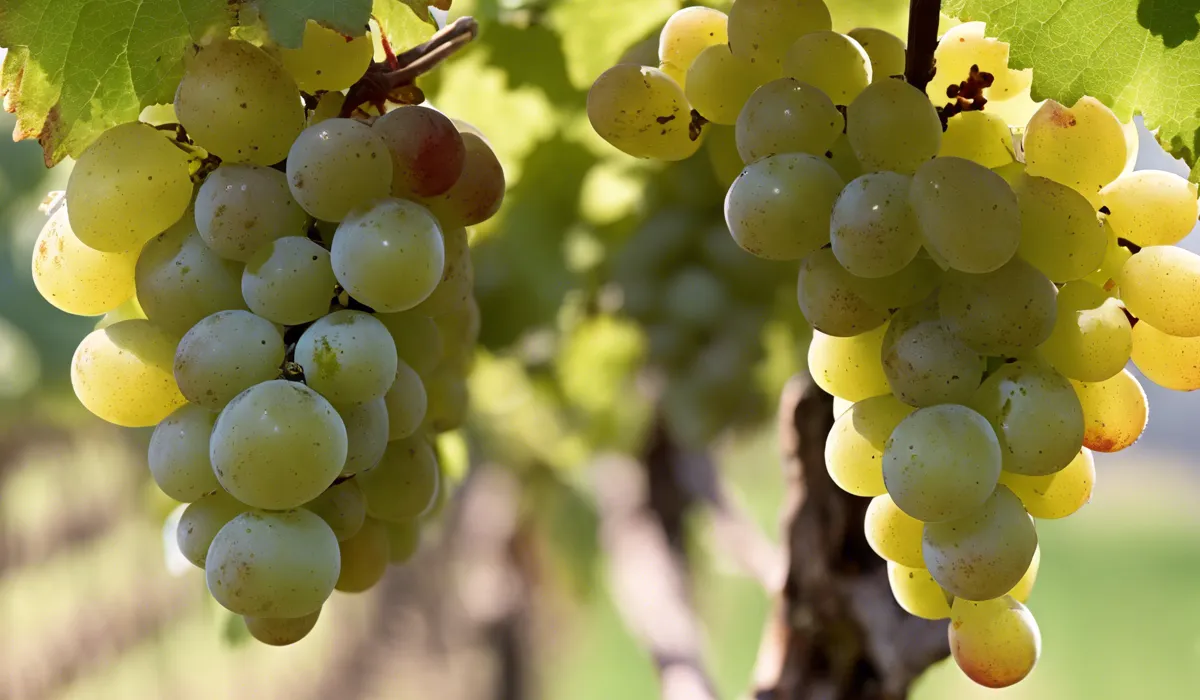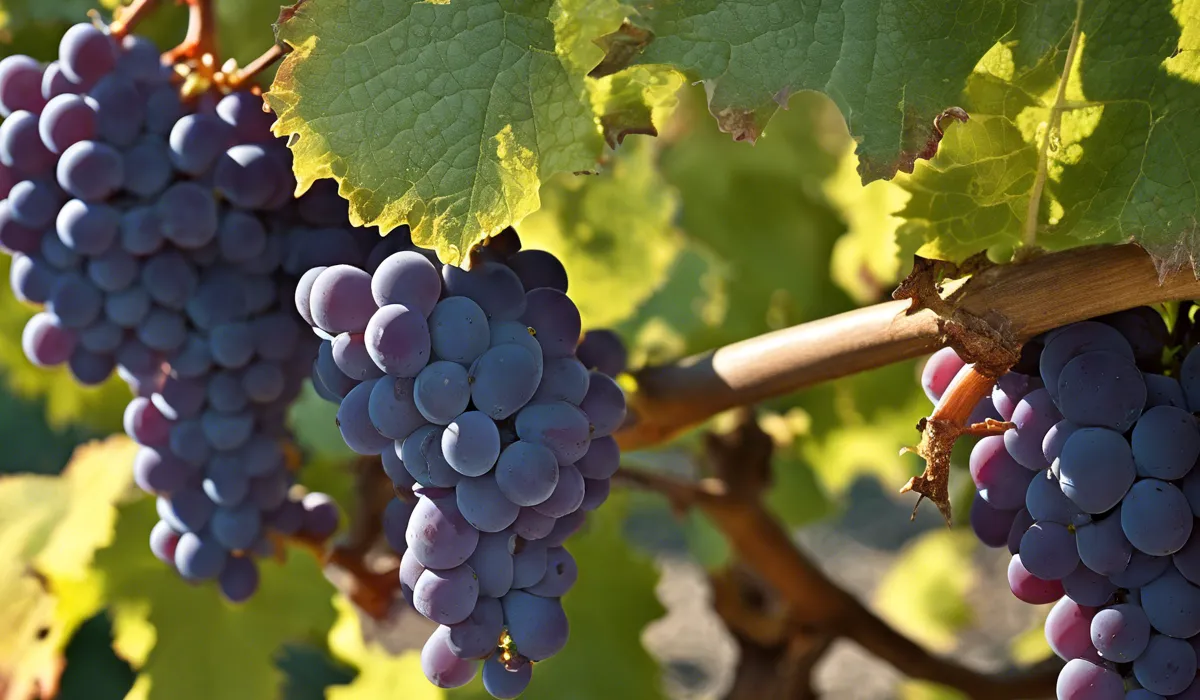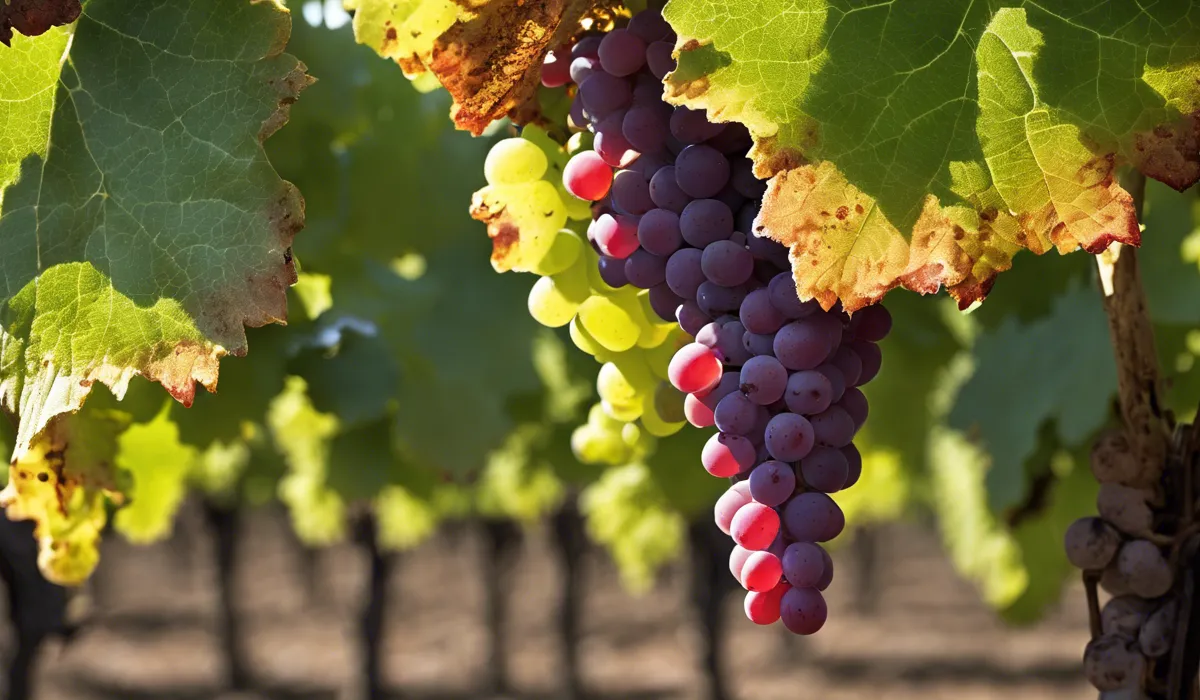To treat powdery mildew on grape vines, prune affected areas and dispose of them carefully. Apply a fungicide containing sulfur, potassium bicarbonate, or neem oil, following label instructions. Ensure good air circulation and avoid overhead watering to prevent future outbreaks.
Identification and Understanding Powdery Mildew on Grape Vines

Description of Powdery Mildew
Powdery mildew is a common fungal disease that affects grapevines, appearing as a white, powdery substance on the leaves and fruit.
This disease can spread quickly, covering large areas of the vine and reducing the quality of the grape harvest.
Causes and Favorable Conditions for Its Spread
Powdery mildew thrives in warm, dry climates with cool nights. It spreads through spores that can be carried by wind, insects, and pruning tools.
High humidity levels and poor air circulation around the vines also contribute to its spread.
Effects on Grapevine Health and Productivity
When powdery mildew takes hold, it can cause leaves to yellow and drop prematurely, reducing the vine’s ability to photosynthesize and weakening the plant.
Infected grapes may crack or fail to ripen properly, directly impacting yield and profitability.
Lifecycle of the Powdery Mildew Fungus
The fungus that causes powdery mildew completes its lifecycle on the vine, overwintering in buds and producing spores in the spring. These spores are the primary means of infection each growing season.
Preventative Measures for Controlling Powdery Mildew

Cultural Practices to Reduce the Risk of Infection
To prevent powdery mildew, it is essential to engage in practices that promote healthy vines and reduce conditions favorable to the fungus.
This includes selecting the right site, managing the vine canopy, and sanitizing tools and equipment.
Proper Vineyard Site Selection
Choosing a site with good air circulation, sunlight, and soil drainage is crucial in preventing powdery mildew. Vines are less likely to be infected in these conditions.
Vine Training and Canopy Management
Training vines properly and managing the canopy helps to ensure good air flow and reduce humidity, making the environment less hospitable for powdery mildew.
Sanitation and Removal of Infected Plant Material
Regularly removing diseased leaves and clusters, and sanitizing pruning tools can prevent the spread of spores to healthy parts of the vine or neighboring plants.
Resistant Grapevine Varieties
Choosing grape varieties with genetic resistance to powdery mildew can significantly reduce the need for treatments and can be a cost-effective strategy for long-term control.
Timing and Methods of Irrigation
Irrigating in the early morning allows foliage to dry before nightfall, decreasing the likelihood of fungal growth. Drip irrigation is preferable to overhead watering to keep the foliage dry.
Use of Organic Preventive Treatments
Organic treatments like sulfur sprays, oil-based products, and biological fungicides can be effective in preventing powdery mildew while maintaining a more sustainable vineyard operation.
Treatment Strategies for Infected Grapevines

Chemical Control Options
When vines are infected, chemical fungicides can be used as a part of an integrated management approach.
These fungicides can be systemic, entering the plant’s circulation, or contact, which remain on the surface.
Systemic Fungicides
Systemic fungicides are absorbed by the vine and can control powdery mildew from within. They can be a reliable option for controlling widespread infections.
Contact Fungicides
Contact fungicides remain on the surface of the plant and are effective when applied before the fungus penetrates the tissue. Frequent reapplication may be necessary.
Guidelines for Fungicide Application
Applying fungicides according to label instructions and at the right time is vital for their effectiveness.
It is also important to rotate fungicides to prevent the fungus from developing resistance.
Organic Treatment Options
For those seeking a more natural approach, options like a baking soda and water solution or a milk and water solution can be applied to infected vines to reduce the presence of powdery mildew.
Monitoring and Ongoing Management
Regularly inspecting vines and adjusting treatment frequency based on the weather and disease pressure is key to staying ahead of powdery mildew.
Record-Keeping and Evaluation of Treatment Effectiveness
Maintaining records of treatments, outbreaks, and weather conditions can help in evaluating the effectiveness of your powdery mildew management strategy and making informed decisions for future seasons.
FAQs About Treating Powdery Mildew on Grape Vines
How should you prune grape vines to remove powdery mildew?
Prune the affected areas of the grape vines, making sure to cut back all the mildewed foliage and dispose of it carefully to prevent spreading the spores.
What types of fungicides are effective against powdery mildew on grape vines?
Fungicides containing sulfur, potassium bicarbonate, or neem oil are effective against powdery mildew. Always follow the label instructions when applying.
How can you prevent powdery mildew from recurring on grape vines?
Ensure good air circulation around the vines, practice proper pruning, and avoid overhead watering to reduce the risk of future outbreaks of powdery mildew.
Is overhead watering a risk factor for powdery mildew on grape vines?
Yes, overhead watering can contribute to the development and spread of powdery mildew by creating moist conditions that the fungus thrives in.
How often should you apply fungicide to treat powdery mildew on grape vines?
The frequency of fungicide application can vary depending on the product used and the severity of the infestation; always adhere to the label’s recommended schedule.
Final Thoughts
To combat powdery mildew on grape vines, one should meticulously prune and discard any infected areas.
Employing fungicides with sulfur, potassium bicarbonate, or neem oil is essential, while adhering to the product’s specific usage instructions.
Maintaining ample air flow around the vines and avoiding the practice of overhead irrigation will serve to hinder future mildew occurrences.
